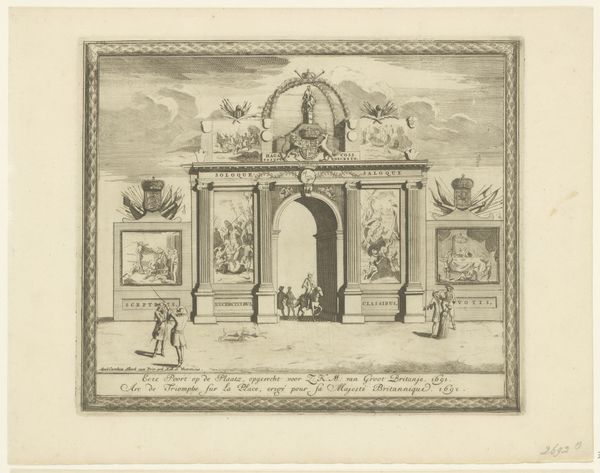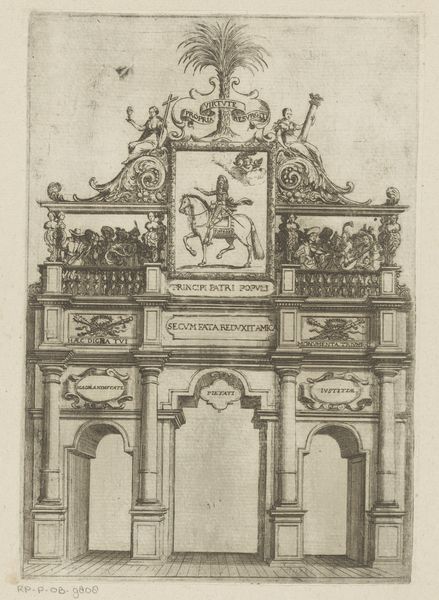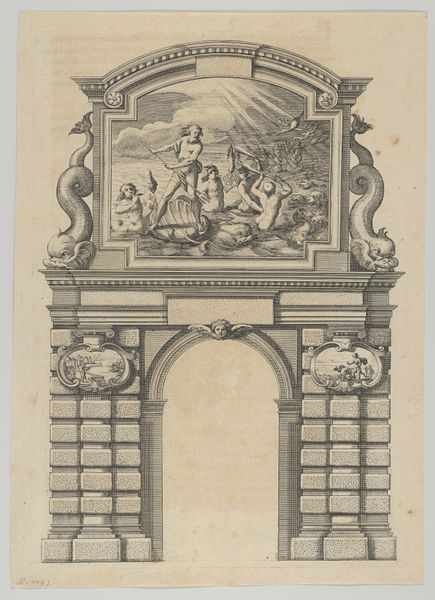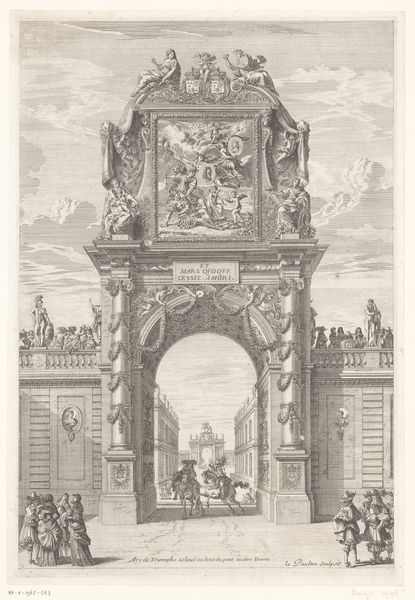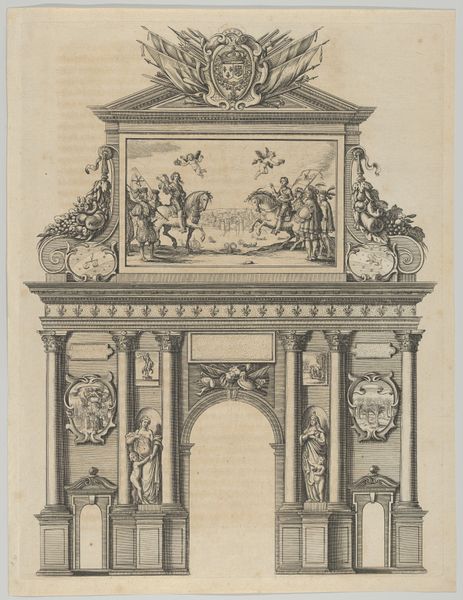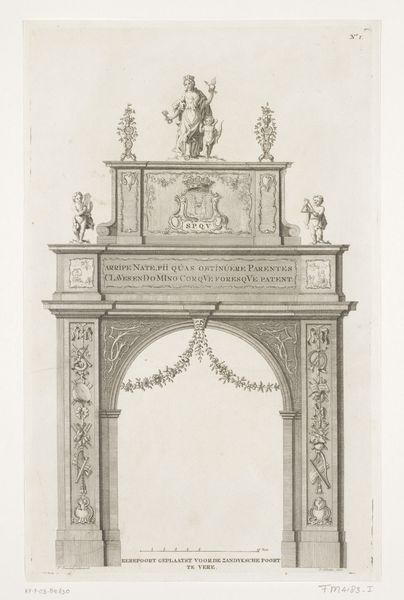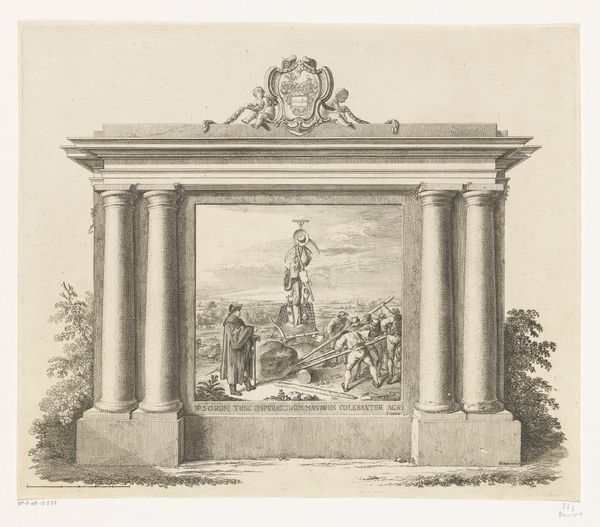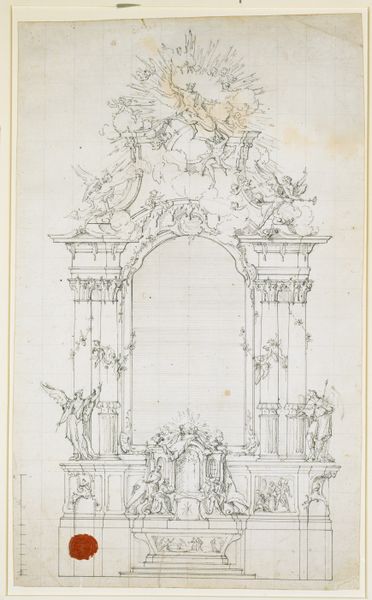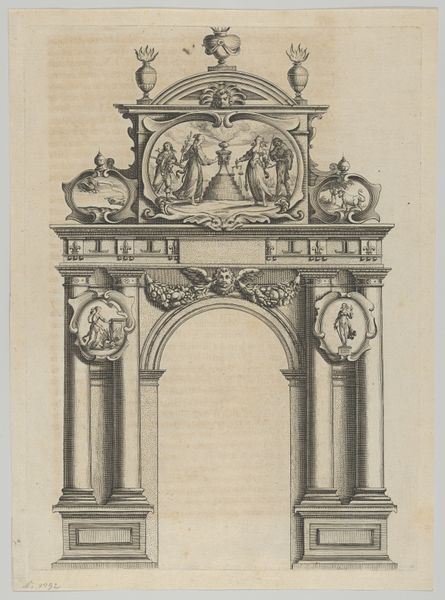
Diploma van Maatschappij de Vrienden der Doofstommen te Antwerpen met bovenaan een portret van Charles Michel de l'Epee 1872
0:00
0:00
print, etching, engraving, architecture
#
narrative-art
# print
#
etching
#
old engraving style
#
etching
#
history-painting
#
academic-art
#
engraving
#
architecture
Dimensions: height 495 mm, width 439 mm
Copyright: Rijks Museum: Open Domain
Curator: Here we have an etching and engraving by Emile Pierre Maria Spruyt, created in 1872. The piece is titled "Diploma van Maatschappij de Vrienden der Doofstommen te Antwerpen met bovenaan een portret van Charles Michel de l'Epee"—quite a mouthful! Editor: My eyes are immediately drawn to the architectural elements. The arch, the columns…it gives such a sense of formality, almost like a stage setting for a historical event. The precision of the lines, too. Curator: Indeed. Spruyt was depicting the diploma issued by the Society of Friends of the Deaf and Mute in Antwerp, topped by a portrait of Charles Michel de l'Epee, a pioneer in deaf education. The visual language employed suggests that the organization wishes to be taken seriously and for the certificate to look of the highest standard. Editor: It's interesting to consider the materials, isn't it? Printmaking allowed for the widespread dissemination of this document. To have it mass-produced meant the organization’s message reached a broad audience. The textures created with etching and engraving must have demanded very specific skills of labor. Curator: Absolutely, and the choice of etching and engraving connects the work to a well-established tradition of academic art, giving legitimacy to both the Society and its mission. Editor: And it shows how a document of recognition becomes an artwork itself, celebrating both achievement and the skill involved in its creation. There’s also that contrast between the sharp, precise architecture and the looser, more fluid depiction of the figures below. Curator: That juxtaposition speaks to the values the Society likely sought to embody: combining reason, order and care for those who had been previously marginalised. It’s also worth considering the social role of institutions like this in 19th century Antwerp. The representation here seeks to align the society with benevolence and tradition. Editor: Looking at it with a modern lens, though, it’s a potent reminder of how societal attitudes have evolved. The visual formality does have an aura of exclusion. Curator: Perhaps, but considering the context, it’s a fascinating window into a specific moment and mindset around deaf education and social progress. Editor: Definitely, thinking about this work and the choices of the artist—its means of production and consumption—highlights an under-appreciated aspect of social history, wouldn't you agree?
Comments
No comments
Be the first to comment and join the conversation on the ultimate creative platform.

